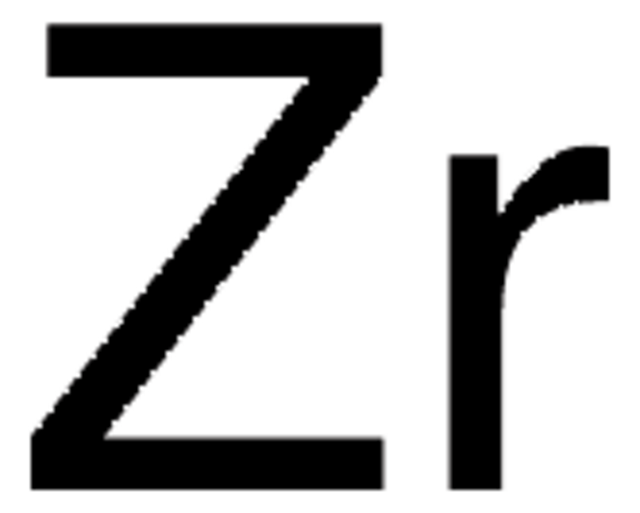460346
Strontium
dendritic pieces, purified by distillation, 99.9% trace metals basis
Synonyme(s) :
Strontium element
About This Item
Produits recommandés
Niveau de qualité
Pureté
99.9% trace metals basis
Forme
dendritic pieces
Produit purifié par
distillation
Pertinence de la réaction
reagent type: reductant
Résistivité
23 μΩ-cm, 20°C
Point d'ébullition
1384 °C (lit.)
Pf
757 °C (lit.)
Densité
2.6 g/mL at 25 °C (lit.)
Chaîne SMILES
[Sr]
InChI
1S/Sr
Clé InChI
CIOAGBVUUVVLOB-UHFFFAOYSA-N
Vous recherchez des produits similaires ? Visite Guide de comparaison des produits
Description générale
Application
Mention d'avertissement
Danger
Mentions de danger
Conseils de prudence
Classification des risques
Skin Irrit. 2 - Water-react 1
Risques supp
Code de la classe de stockage
4.3 - Hazardous materials which set free flammable gases upon contact with water
Classe de danger pour l'eau (WGK)
WGK 3
Point d'éclair (°F)
Not applicable
Point d'éclair (°C)
Not applicable
Équipement de protection individuelle
Eyeshields, Gloves, type P3 (EN 143) respirator cartridges
Faites votre choix parmi les versions les plus récentes :
Déjà en possession de ce produit ?
Retrouvez la documentation relative aux produits que vous avez récemment achetés dans la Bibliothèque de documents.
Notre équipe de scientifiques dispose d'une expérience dans tous les secteurs de la recherche, notamment en sciences de la vie, science des matériaux, synthèse chimique, chromatographie, analyse et dans de nombreux autres domaines..
Contacter notre Service technique





